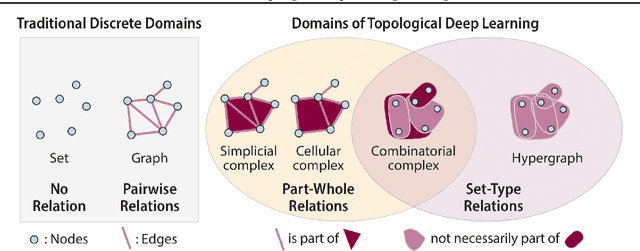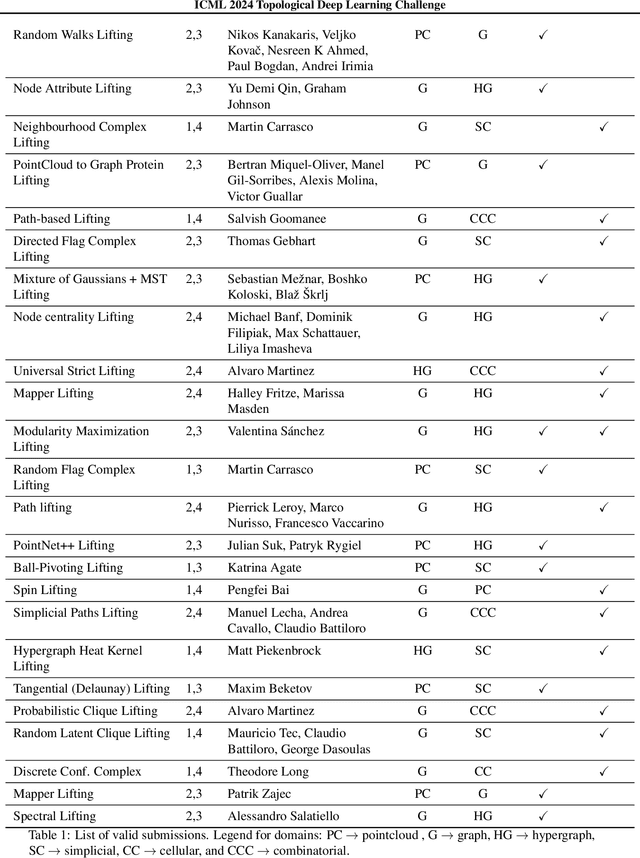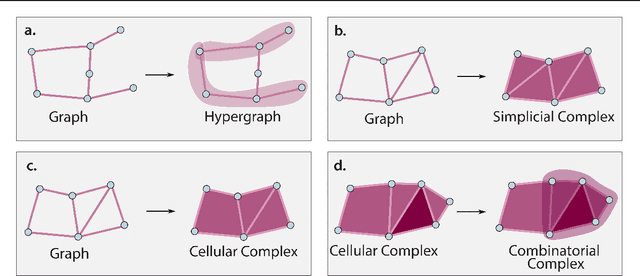Boshko Koloski
FuDoBa: Fusing Document and Knowledge Graph-based Representations with Bayesian Optimisation
Jul 09, 2025Abstract:Building on the success of Large Language Models (LLMs), LLM-based representations have dominated the document representation landscape, achieving great performance on the document embedding benchmarks. However, the high-dimensional, computationally expensive embeddings from LLMs tend to be either too generic or inefficient for domain-specific applications. To address these limitations, we introduce FuDoBa a Bayesian optimisation-based method that integrates LLM-based embeddings with domain-specific structured knowledge, sourced both locally and from external repositories like WikiData. This fusion produces low-dimensional, task-relevant representations while reducing training complexity and yielding interpretable early-fusion weights for enhanced classification performance. We demonstrate the effectiveness of our approach on six datasets in two domains, showing that when paired with robust AutoML-based classifiers, our proposed representation learning approach performs on par with, or surpasses, those produced solely by the proprietary LLM-based embedding baselines.
From Symbolic to Neural and Back: Exploring Knowledge Graph-Large Language Model Synergies
Jun 11, 2025Abstract:Integrating structured knowledge from Knowledge Graphs (KGs) into Large Language Models (LLMs) enhances factual grounding and reasoning capabilities. This survey paper systematically examines the synergy between KGs and LLMs, categorizing existing approaches into two main groups: KG-enhanced LLMs, which improve reasoning, reduce hallucinations, and enable complex question answering; and LLM-augmented KGs, which facilitate KG construction, completion, and querying. Through comprehensive analysis, we identify critical gaps and highlight the mutual benefits of structured knowledge integration. Compared to existing surveys, our study uniquely emphasizes scalability, computational efficiency, and data quality. Finally, we propose future research directions, including neuro-symbolic integration, dynamic KG updating, data reliability, and ethical considerations, paving the way for intelligent systems capable of managing more complex real-world knowledge tasks.
Make Literature-Based Discovery Great Again through Reproducible Pipelines
Feb 23, 2025Abstract:By connecting disparate sources of scientific literature, literature\-/based discovery (LBD) methods help to uncover new knowledge and generate new research hypotheses that cannot be found from domain-specific documents alone. Our work focuses on bisociative LBD methods that combine bisociative reasoning with LBD techniques. The paper presents LBD through the lens of reproducible science to ensure the reproducibility of LBD experiments, overcome the inconsistent use of benchmark datasets and methods, trigger collaboration, and advance the LBD field toward more robust and impactful scientific discoveries. The main novelty of this study is a collection of Jupyter Notebooks that illustrate the steps of the bisociative LBD process, including data acquisition, text preprocessing, hypothesis formulation, and evaluation. The contributed notebooks implement a selection of traditional LBD approaches, as well as our own ensemble-based, outlier-based, and link prediction-based approaches. The reader can benefit from hands-on experience with LBD through open access to benchmark datasets, code reuse, and a ready-to-run Docker recipe that ensures reproducibility of the selected LBD methods.
LLM Embeddings for Deep Learning on Tabular Data
Feb 17, 2025Abstract:Tabular deep-learning methods require embedding numerical and categorical input features into high-dimensional spaces before processing them. Existing methods deal with this heterogeneous nature of tabular data by employing separate type-specific encoding approaches. This limits the cross-table transfer potential and the exploitation of pre-trained knowledge. We propose a novel approach that first transforms tabular data into text, and then leverages pre-trained representations from LLMs to encode this data, resulting in a plug-and-play solution to improv ing deep-learning tabular methods. We demonstrate that our approach improves accuracy over competitive models, such as MLP, ResNet and FT-Transformer, by validating on seven classification datasets.
SEKE: Specialised Experts for Keyword Extraction
Dec 18, 2024



Abstract:Keyword extraction involves identifying the most descriptive words in a document, allowing automatic categorisation and summarisation of large quantities of diverse textual data. Relying on the insight that real-world keyword detection often requires handling of diverse content, we propose a novel supervised keyword extraction approach based on the mixture of experts (MoE) technique. MoE uses a learnable routing sub-network to direct information to specialised experts, allowing them to specialize in distinct regions of the input space. SEKE, a mixture of Specialised Experts for supervised Keyword Extraction, uses DeBERTa as the backbone model and builds on the MoE framework, where experts attend to each token, by integrating it with a recurrent neural network (RNN), to allow successful extraction even on smaller corpora, where specialisation is harder due to lack of training data. The MoE framework also provides an insight into inner workings of individual experts, enhancing the explainability of the approach. We benchmark SEKE on multiple English datasets, achieving state-of-the-art performance compared to strong supervised and unsupervised baselines. Our analysis reveals that depending on data size and type, experts specialize in distinct syntactic and semantic components, such as punctuation, stopwords, parts-of-speech, or named entities. Code is available at: https://github.com/matejMartinc/SEKE_keyword_extraction
Evaluating and explaining training strategies for zero-shot cross-lingual news sentiment analysis
Sep 30, 2024



Abstract:We investigate zero-shot cross-lingual news sentiment detection, aiming to develop robust sentiment classifiers that can be deployed across multiple languages without target-language training data. We introduce novel evaluation datasets in several less-resourced languages, and experiment with a range of approaches including the use of machine translation; in-context learning with large language models; and various intermediate training regimes including a novel task objective, POA, that leverages paragraph-level information. Our results demonstrate significant improvements over the state of the art, with in-context learning generally giving the best performance, but with the novel POA approach giving a competitive alternative with much lower computational overhead. We also show that language similarity is not in itself sufficient for predicting the success of cross-lingual transfer, but that similarity in semantic content and structure can be equally important.
ICML Topological Deep Learning Challenge 2024: Beyond the Graph Domain
Sep 08, 2024


Abstract:This paper describes the 2nd edition of the ICML Topological Deep Learning Challenge that was hosted within the ICML 2024 ELLIS Workshop on Geometry-grounded Representation Learning and Generative Modeling (GRaM). The challenge focused on the problem of representing data in different discrete topological domains in order to bridge the gap between Topological Deep Learning (TDL) and other types of structured datasets (e.g. point clouds, graphs). Specifically, participants were asked to design and implement topological liftings, i.e. mappings between different data structures and topological domains --like hypergraphs, or simplicial/cell/combinatorial complexes. The challenge received 52 submissions satisfying all the requirements. This paper introduces the main scope of the challenge, and summarizes the main results and findings.
AutoML-guided Fusion of Entity and LLM-based representations
Aug 19, 2024



Abstract:Large semantic knowledge bases are grounded in factual knowledge. However, recent approaches to dense text representations (embeddings) do not efficiently exploit these resources. Dense and robust representations of documents are essential for effectively solving downstream classification and retrieval tasks. This work demonstrates that injecting embedded information from knowledge bases can augment the performance of contemporary Large Language Model (LLM)-based representations for the task of text classification. Further, by considering automated machine learning (AutoML) with the fused representation space, we demonstrate it is possible to improve classification accuracy even if we use low-dimensional projections of the original representation space obtained via efficient matrix factorization. This result shows that significantly faster classifiers can be achieved with minimal or no loss in predictive performance, as demonstrated using five strong LLM baselines on six diverse real-life datasets.
A Computational Analysis of the Dehumanisation of Migrants from Syria and Ukraine in Slovene News Media
Apr 10, 2024

Abstract:Dehumanisation involves the perception and or treatment of a social group's members as less than human. This phenomenon is rarely addressed with computational linguistic techniques. We adapt a recently proposed approach for English, making it easier to transfer to other languages and to evaluate, introducing a new sentiment resource, the use of zero-shot cross-lingual valence and arousal detection, and a new method for statistical significance testing. We then apply it to study attitudes to migration expressed in Slovene newspapers, to examine changes in the Slovene discourse on migration between the 2015-16 migration crisis following the war in Syria and the 2022-23 period following the war in Ukraine. We find that while this discourse became more negative and more intense over time, it is less dehumanising when specifically addressing Ukrainian migrants compared to others.
Multi-Task Learning for Features Extraction in Financial Annual Reports
Apr 08, 2024



Abstract:For assessing various performance indicators of companies, the focus is shifting from strictly financial (quantitative) publicly disclosed information to qualitative (textual) information. This textual data can provide valuable weak signals, for example through stylistic features, which can complement the quantitative data on financial performance or on Environmental, Social and Governance (ESG) criteria. In this work, we use various multi-task learning methods for financial text classification with the focus on financial sentiment, objectivity, forward-looking sentence prediction and ESG-content detection. We propose different methods to combine the information extracted from training jointly on different tasks; our best-performing method highlights the positive effect of explicitly adding auxiliary task predictions as features for the final target task during the multi-task training. Next, we use these classifiers to extract textual features from annual reports of FTSE350 companies and investigate the link between ESG quantitative scores and these features.
 Add to Chrome
Add to Chrome Add to Firefox
Add to Firefox Add to Edge
Add to Edge